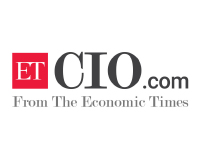2020 was the year of uncertainties; the global pandemic created disruptions across sectors all over the world. Organisations are using technology to respond to disruption and navigate the immediate challenges and build a more resilient and human-centred economy. A wave of digital transformation across sectors was observed in return, bringing opportunities for some.
The pandemic gave way to a new mantra for the industry i.e. Pivot or Perish, and digital transformation became the necessity for businesses rather than a choice to move beyond old school brick-and-mortar presence online. The move towards a digital business model created increasing pressure on enterprises to adopt newer technologies and move on the path of digitalization to stay competitive and create a connected customer experience for survival.
According to a NASSCOM report, Digital transformation deals have seen a 30% jump, 80% jump in cloud spending, and a 15% increase in customer experience has been witnessed since the pandemic. In 2021, we are going to see a wave of hyper-digitalization, more of a phygital (Physical + Digital) world.
This will bring in upgrades in the current business models helping the enterprises grow in terms of breaking boundaries, offering a connected customer experience, automate sales or front-end function, resolve supply chain disruptions etc. In a nutshell, businesses will be seen unleashing new technologies and adopting the new way of business in this coming year. According to a Gartner report, 89% of high-tech CIOs expect the use of digital channels to reach customers will increase, making digital transformation essential for economic recovery in 2021.
Enhancing Digital Ecosystem
The pandemic reinstated a reset mode, making enterprises relook at their existing business models and accelerating their digital-first approach. The IT industry was referred to as an essential service provider during the lockdown as it provided support to many other industries such as BFSI, Healthcare, etc. While many businesses were already on their transformation journey, the pandemic worked as a catalyst for digitalization.
COVID-19 has accelerated the rapid adoption of digital enablement through cloud migration, extreme automation, and mobility, leading to an increase in contactless and always available services. In 2021, enterprises will adapt to new technologies that can help reduce their operation cost, mitigate the risks, and deliver business value that will help them connect their businesses and value chain with the external world. The business playbook will have to be re-written, with Trust, Agility, Talent, and Innovation being the critical pillars for being part of the contactless world.




